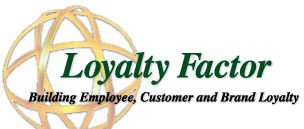Effective coaching is a key method for increasing productivity and profitability in an organization. Recent studies have shown that 85% of the workforce wants holistic coaching so that they can continually improve and grow.
The Manchester Union-Leader - When It's a Merger, Staying on Course is Critical
The Manchester Union-Leader
By Jerry Miller, Union Leader Correspondent
PORTSMOUTH, NH - When Bruce Dicker, president of JSA Inc. architects, decided to acquire Pappas Associates, of Jacksonville, Fla., a smaller architectural practice, he did what the books on mergers and acquisitions told him to do. He retained the services of an "integration" consultant, to help bridge the cultural and procedural issues his larger company would almost certainly face in taking over Pappas.
"The sooner you're on the same page, the less likely it is that you'll have problems," he said.
The teamwork to integrate was provided by another Portsmouth firm, Loyalty Factor LLC, and Dicker said the merger was put on the right track, from the start.
"It really helped us deal with a lot of hidden issues, or those concerns that were potential flash points," he said. "It takes someone ... who has been through this before, to identify not only the potential problem areas, but the potential opportunities."
Creating a blend
Among the obvious issues presented by virtually every acquisition and merger are concerns about even the simplest day-to-day operational procedures. No two companies make decisions in the same way and certainly no two owners have the same personalities, but employees of the acquired operation must have some sense of continuity if the new owner is to get the best work from them.Older employees, especially those nearing retirement age, may want to know if the new bosses are about to push them out the door.
Questions surrounding compensation and pay scales, as well as differences in vacation policies and health benefits, must also be resolved.
Teamwork
In acquiring Pappas Associates, Dicker was buying a company that had been run by the same man for 32 years."It was quite a challenge to take on this kind of sole proprietorship," he said. "There were no shortage of issues that needed addressing."
Enter Dianne Durkin, president of Loyalty Factor LLC, a Port City-based consulting operation that works with companies involved in mergers and acquisitions and also offers customized personnel training to improve customer relationships and management skills.
Dicker retained Durkin early on. Over the course of three months, she interviewed almost all employees of both firms, as well as top management. Focus groups were created and a detailed plan of each company's strengths and weaknesses was developed. The plan went to a combined management team from each firm. Durkin then brought together the team to review her findings and recommendations. The team was asked to "sponsor" the findings, as a way of giving credence to the suggested integration plan.
To help them function, Durkin's crew also provided training in team-based problem solving.
Retention
Durkin said what needs to be created, for an acquisition to succeed, is a joint "value system," because without it, "You'll lose the best people both sides have to offer," and that runs the risk of wholesale customer defections, especially from the acquired company.Just as customers represent a major concern in a merger, so do acquired employees.
"They need to be reassured and they need to clearly understand the changes a merger will create. Good people are the first to go. You must communicate with them," Durkin said, especially when it comes to changes in operating policy and issues that directly impact their individual well-being, such as fringe benefits.
Durkin contends a major issue centers around the boss of the acquired company, especially if that person is an entrepreneur, as well as its founder. In some instances, the person may have to be terminated. In others, the individual needs to be kept on, in large part because of expertise, contacts and the expectations of acquired customers.
The other acquired executives will also have concerns, including job security and the possibility of termination. Two financial managers are usually not needed, nor two human resource managers or two marketing managers.
Where are the bagels?
If a company is acquired by a European operation, the societal and cultural differences may be even more exacerbated in approaches to such issues as dress codes, holidays and vacations.And it's often the seemingly little things that are most worrisome, if not offensive. Durkin related the tale of a New York City company, acquired by a European counterpart. The first thing to go was the daily morning supply of bagels and toppings.
"Many employees wondered, if they took away the bagels, what's next?" she said.
Timing
It is difficult in a merger to determine the best time to let employees know what's going on, since neither side wants to worry customers before the deal has been sealed."It's best to get people together before the acquisition is announced to the rest of the world. It's demoralizing for employees to read about it in the newspapers," Durkin said.
For those employees who choose to stay on, Durkin said managers should "Let them know how their jobs will change" and, most importantly, "Let them know they are valued."
JSA's Dicker said Loyalty Factor's assistance in his merger was "invaluable," including, two follow-up visits at the six-month and one-year intervals following the acquisition.



